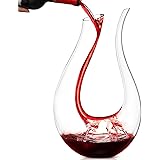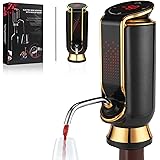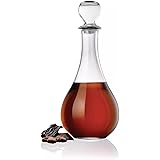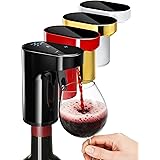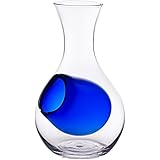Discover France’s Premier Wine Regions: A Deep Dive into Terroir and Tradition
Did you know French parents once included wine in lunch baskets? This was a common practice in the 1950s. They believed it could kill microbes. It also kept a child’s chest warm for colds. Welcome to the captivating world of French wine regions. This article delves deeper into the top eight regions. We explore their distinct qualities. Each region contributes profoundly to France’s rich wine legacy.
Champagne: The Apex of Sparkling Wine
Champagne is the undeniable home of luxury sparkling wine. It sits approximately 90 miles east of Paris. The soil here is uniquely white and chalky. Ancient marine clay intermingles with these subsoils. This cool continental climate is remarkably ideal. It cultivates grapes of unparalleled quality. These are destined for the world’s most exquisite sparkling wines.
Remember, true Champagne is an exclusive treasure. Its grapes and wines are permitted only within the sacred Champagne area. This name earned protected status in 1845. Strict production rules govern every single step. These regulations cover vine planting and yield levels. They also dictate specific harvest dates. The exact amount of juice pressed is meticulously controlled.
Seven grape varieties are technically permitted. Pinot Noir, Pinot Meunier, and Chardonnay are main components. They represent 95% of regional vine plantings. These grapes form the majority of Champagne blends. This creates varied styles, levels of sweetness, and price tags. Expert understanding of *terroir* and *méthode traditionnelle* defines this appellation.
Bordeaux: A Symphony of Fine Wines
Subsequently, our journey leads us to Bordeaux. This region stands as a pre-eminent producer of fine wines. Gentle breezes from the Atlantic Ocean bless this area. Westerly winds create a cool maritime climate. This climate is ideal for nurturing gently sloping vineyards. Diverse soils of gravel, sand, and limestone are found here. They yield robust reds and crisp, dry whites. Sumptuously rich dessert wines also originate here.
Bordeaux comprises two distinct halves. These are famously known as the Left and Right Banks. The Left Bank crafts many top-tier classified growths. The Right Bank boasts legendary wines of Saint-Émilion. Bordeaux blends are incredibly complex. Merlot, Cabernet Sauvignon, and Cabernet Franc are key. Petit Verdot, Carménère, and Malbec complete many red blends.
In the realm of white wines, Sauvignon Blanc reigns supreme. It crafts exceptionally crisp, fresh wines. Meanwhile, the elegant sibling, Sémillon, creates opulent dessert wines. Sauternes and Barsac offer a taste of liquid gold. The region’s historic châteaux exemplify its viticultural heritage.
Burgundy: Timeless Elegance and Storied *Climats*
Moving next, we delve into the timeless elegance of Burgundy. This region is steeped in a royal legacy. Dukes of Burgundy first elevated its winemaking status. The storied land saw a renaissance after the French Revolution. Viticulture was lovingly restored by ancestral families. These families continue sacred traditions today.
Major growing areas include Chablis, known for lean, pure Chardonnay. Côte de Nuits produces world-class Pinot Noir. Côte de Beaune makes a richer style of Chardonnay. Côte Chalonnaise offers value Pinot Noir. Maconnais gives affordable Chardonnay. Beaujolais is famously dedicated to the Gamay grape.
Burgundy hosts 1,247 different vineyards. They grow on slopes or the plains below. Diverse soils feature Jurassic fossils and limestone. Soft marl, lime-rich brown soils, and clay are also present. Each vineyard, known as a *climat*, is often shared by multiple owners. Marriages between winemaking families traditionally increase vineyard holdings, reflecting a deep communal bond within the region.
Rhone Valley: Northern Syrah, Southern Blends
Our exploration continues into the Rhone Valley. This storied wine region nestles in the heart of France. Vineyards stretch from Lyon in the north to Provence in the south. This region divides into Northern and Southern Rhone. Diverse climates and soils are found within. They consequently give birth to distinct, robust wines.
Northern Rhone features steep terraced vineyards. Syrah grapes thrive here, producing powerful reds. Côte Rôtie, Cornas, and Hermitage are famous appellations. Crozes-Hermitage is also a Northern Rhone gem. Condrieu is specifically noted for its rich Viognier white wines. These are often oily in texture.
Southern Rhone enjoys a warmer climate. It is famed for its complex blends. Grenache, Syrah, and Mourvèdre are most notable (the GSM blend). These come together to create rich, full-bodied wines. Châteauneuf-du-Pape is a celebrated appellation. Côtes du Rhône also offers beloved wines. These wines combine unique natural elements and century-old traditions. Connoisseurs and casual drinkers alike cherish them.
Loire Valley: The Garden of France’s Diverse Wines
Subsequently, we journey to the Loire Valley. Often called France’s “Garden,” it is a revered wine region. It stretches along the meandering Loire River. This picturesque region offers diverse wine styles. Muscadet reigns in the west. Its light, fresh wines pair perfectly with seafood. Anjou-Saumur focuses on light-acid Chenin Blanc. Cabernet Franc also thrives here.
Central Loire produces benchmark Sauvignon Blanc. Sancerre and Pouilly-Fumé are renowned appellations. These are crisp, aromatic whites. Loire Valley wines boast high acidity. Their freshness is also a hallmark characteristic. These wines excellently complement a wide range of cuisines. They offer a delightful exploration for any palate.
Alsace: Varietal Purity at the German Border
Next, we visit Alsace, a region protected by the Vosges Mountains. It borders Germany to the east. This region is renowned for its distinctive white wines. It is one of few French wine regions. It labels wines primarily by grape variety. Riesling, Gewürztraminer, Pinot Gris, and Muscat dominate production. These wines show aromatic intensity. Elegance and crisp acidity are celebrated characteristics. They often showcase a delightful balance. This balance is between fruity sweetness and refreshing dryness.
Alsace’s wine route is one of France’s oldest. It winds through idyllic landscapes. Visitors explore ancient wineries. They also taste the region’s gastronomic delights. These pair perfectly with aromatic wines. Crémant d’Alsace is a notable sparkling wine from this area. This wine culture deeply roots in rich history. It is influenced by the fusion of French and German traditions. This offers a unique, enchanting experience. It encapsulates both landscape charm and wine excellence.
Provence: The Global Standard for Rosé
Furthermore, Provence basks in Mediterranean sunshine. It lies in southeast France. This region is famed primarily for rosé wines. Rosé accounts for the majority of the region’s production. Provence sets the standard for this style. Its rosés are globally renowned for quality. They show elegance and their pale salmon-pink hue. Unique *terroir* characterizes this region. A warm Mediterranean climate prevails.
Grapes like Grenache, Syrah, and Cinsault thrive here. Mourvèdre also contributes to complexity and character. Full-bodied red wines are also produced in smaller quantities. Crisp, floral white wines exist as well. Vineyards in Provence are often nestled between the azure sea and rugged mountains. Ample sunshine and the moderating Mediterranean effect aid viticulture. Wine tourism flourishes there. Visitors enjoy picturesque landscapes and historic estates. They savor exquisite Provençal wine.
Languedoc-Roussillon (Occitanie): Volume, Value, and Vin Doux Naturels
Lastly, we explore Languedoc-Roussillon. This area was formally renamed Occitanie in 2016. One in three French wines originates here. The Mediterranean Sea ensures a very warm climate. It enjoys an average of 320 sunny days annually. The Corbières area is known for making Carignan wines. Languedoc boasts the highest percentage of organic wines in the country. Red, white, and rosé wines have risen in popularity. Their affordability-to-quality ratio is excellent.
Common red grapes include Grenache, Syrah, and Carignan. Cinsault and Mourvèdre are also vital. White varieties feature Grenache Blanc, Chardonnay. Chenin Blanc, Marsanne, and Roussanne also grow. Roussillon is situated southwest of Languedoc. A unique feature is the production of Vin Doux Naturels. These naturally sweet wines are particularly notable. Banyuls and Maury are famous regions for this style. Fermentation stops early, retaining natural grape sugars. This creates luscious, sweet styles. These distinct French wine regions ultimately define France’s vast winemaking landscape.


